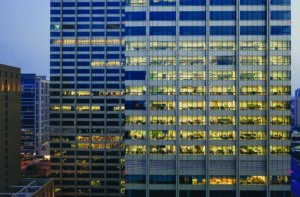Whether you work for a sprawling urban hospital or a small neighborhood clinic, you’re faced with the same buildings challenges: high maintenance costs, rising energy prices and aging infrastructure. This affects the bottom line, but it also affects the quality of patient care. Striking a balance between the two is particularly challenging in healthcare — it could literally be a matter of life and death.
Many large healthcare providers now have dozens or even hundreds of remote sites, mostly obtained over the past five to 10 years. Rarely are these new, modern buildings; they’re typically the result of acquisitions, mergers or the purchase of existing buildings. Aging infrastructure often comes with these additions and that means you inherit existing building systems and controls, if any even exist.
We’re also seeing a trend where services are moving away from the hospital to smaller venues such as outpatient surgery centers and retail pharmacy clinics. This is good news from an accessibility standpoint, but healthcare-retail providers face the same challenges of balancing patient health with financial health. (Check out our video on Smart Energy Management in Retail-Healthcare Facilities.)
Boosting Efficiency
Whether linking multiple healthcare networks or right-sizing a smaller facility, there’s a need to boost operational efficiencies — for patient care, and for the bottom line.
Without an intelligent infrastructure, however, a large percentage of a hospital’s budget is wasted on inefficient lighting, heating, cooling, ventilation and other building systems. It’s estimated that a lack of energy management can cost large healthcare providers millions of dollars per year. And for smaller providers, every penny counts.
There’s also the cost of power outages. Consider that when a 200-bed hospital experiences a power outage and its backup generator fails, it costs the hospital $1 million. For a 500-bed hospital, that number jumps to a whopping $5 million.
Delivering critical care to patients also depends on uninterrupted power in operating rooms, emergency departments and intensive care units. Secure power isn’t a “nice to have” in a healthcare setting. It’s mandatory — people’s lives depend on it.
Because secure, uninterrupted power is mandatory, energy efficiency is an important consideration when looking to boost operational efficiency. On average, 75% of a hospital’s energy usage stems from lighting, heating, cooling and ventilation, as well as hot water heating. Building energy management systems can improve energy efficiency through such measures as:
• Integrated variable speed drives
• Power metering
• Load management
• Retro-commissioning and audits
• Greenhouse gas monitoring
The goal of any hospital or retail-healthcare provider is to provide high-quality services and continuity of care for patients. Unreliable power can have serious consequences on human life, but it also negatively affects finances, technical operations and the provider’s reputation.
Building management systems can help to identify opportunities for substantial energy and cost savings. Metering and monitoring provide crucial information on how buildings are performing to help maximize uptime and minimize costs.
By making the investment in an intelligent technology infrastructure, smaller clinics and large hospitals alike can address the challenges of high maintenance costs, rising energy prices and aging infrastructure — and, perhaps most importantly, provide even better care to patients.
Recommended Reading:
• Healthcare Solution Guide for Centralized Critical Power.
• How Secure Power Solutions Support Healthcare Facility Infrastructure Stability and Safety.

